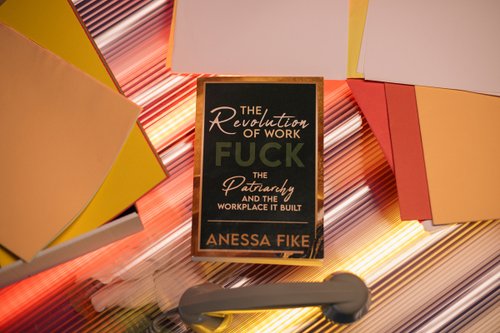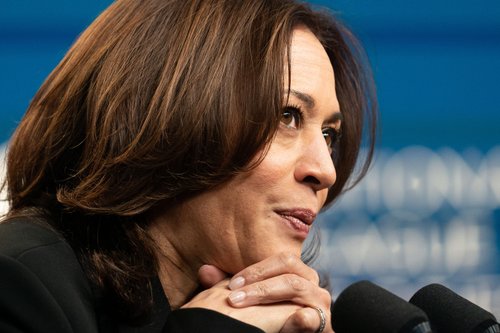What’s causing the DEI backlash—the initiatives, or the acronym itself?
Jun 19, 2024
5 mins

In recent years, the landscape of DEI initiatives in the US has faced significant challenges. This pushback is particularly evident in states like Florida, where lawmakers seek to redefine the scope and application of these programs. For example, the 2022 Stop WOKE Act, one of several bills signed by Florida Governor Ron DeSantis in his “war on woke ideology,” restricts how topics related to systemic racism and sexism are taught in schools and workplace training programs. Yet, its future is uncertain after federal judges recently challenged the law’s constitutionality.
In 2023 alone, more than 20 states considered or approved new laws taking aim at DEI. At a national level, Ohio Senator JD Vance has introduced the Dismantle DEI Act of 2024, which would eliminate federal funding for DEI initiatives across the US.
Workplaces are not isolated from the impacts of anti-DEI rhetoric either. According to The New York Times, hiring for DEI roles has plunged over the past two years, and the number of investor calls mentioning DEI has also fallen. In February 2024, the Washington Post reported that Zoom eliminated its internal DEI team as part of broader company layoffs. Additionally, major corporations such as Meta, Tesla, DoorDash, Lyft, Home Depot, Wayfair, and X significantly reduced their DEI teams by 50% or more during 2023 budget adjustments.
Yet, this retreat seems at odds with the proven benefits of a diverse work environment. A December 2023 McKinsey report found that companies with highly diverse executive teams were 36% more likely to outperform less diverse companies in profitability. Furthermore, these diverse companies were 70% more successful in capturing new markets and exhibited an 87% greater ability to make effective decisions.
Nevertheless, critics like anti-DEI activist Christopher Rufo have actively campaigned against what they call ‘Great Awokening,’ arguing that DEI programs promote systematically unequal division.
We all—well, most of us—want a workplace where everyone feels included, so where is this backlash coming from? Could the emphasis on the ‘right’ or ‘correct’ language be pushing these critics to view DEI as overly prescriptive and alienating, or is there an underlying issue? Nate Shalev, our DEI Lab expert and founder of Revel Impact, offers insights to help us understand these complex dynamics.
Is DEI terminology causing anti-DEI rhetoric?
The debate around DEI often centers on the intricate nature of the language used to foster inclusive communities. “The complexity of language, particularly within the LGBTQ+ community, can sometimes become overwhelming,” Shalev points out. This can lead to paralysis because people often feel disoriented when using inclusive language, it’s not natural to them—indeed, change is never comfortable. “It becomes so intricate that it hinders their ability to engage meaningfully,” they say.
To help us understand complex ideas, we tend to turn to acronyms. However, Shalev notes that this can misappropriate these broader concepts. “When DEI is abbreviated, it can be detached from its original meaning and repurposed based on individual biases or societal narratives,” Shalev explains. This is similar to what happens with the LGBTQ+ acronym, which at its core represents a rich spectrum of diverse identities—yet for many, it has been reduced to the point where the individual significance of each is overlooked. “It allows people to redefine the group in oversimplified or inaccurate terms,” they add.
Shalev believes that focusing too much on the terminology can detract from the actual work of inclusion. Whether you call it DEI or something else entirely, the heart of the initiative remains the same—DEI can exist without the label. “The exact terms used within your organization may not be as important as how the concepts are introduced and implemented. It’s not necessarily about rebranding but rather about reintroducing these ideas through effective training, educational sessions, one-on-one discussions with managers, and clear guidelines and objectives,” Shalev explains.
DEI is not an ideological catch-all
Lumping all DEI concepts together can lead to the mistaken belief that DEI is a singular entity, like a marketing or HR department, which can be easily defined, managed, or even eliminated. This oversimplification can lead to misinterpretations, where some individuals might see DEI as a scapegoat for unresolved preconceptions about race or gender identity. Shalev explains, “DEI, therefore, becomes a convenient target for those looking to justify their discomfort with confronting their own prejudices or for those seeking to advance these biases.”
This misrepresentation often results in a backlash that labels DEI efforts as reactionary responses to broad ideological shifts rather than essential business practices. “DEI efforts are often viewed as liabilities rather than assets,” Shalev explains. “As a result, these initiatives often remain underfunded and undervalued, particularly when business leaders do not see them as directly contributing to profit or other key business outcomes.” In such environments, companies may feel emboldened to deprioritize or even cut DEI-related budgets, especially when cost-saving measures are prioritized.
In fact, DEI is much more comprehensive—it’s an integrated, cross-department approach to cultivating a positive workplace culture. It’s not about pushing “woke ideology,” but making sure every individual has a seat at the table, that they feel valued in the workplace for who they are. “DEI should be viewed as a lens or a framework through which all organizational decisions are made, guiding how we engage with and support each other in the workplace,” Shalev says. It’s not just a policy or a program but a way of life within the corporate environment.
Burnout among DEI supporters
Anti-DEI rhetoric is emerging not only from its critics but also from within its ranks. Shalev notes that burnout and apathy are increasingly affecting DEI supporters as well. One major issue is the lack of clear goals and transparency surrounding DEI initiatives. This opacity particularly impacts intersectional identities and communities with specific concerns—people with disabilities, for example, who are underrepresented in DEI—leaving many feeling neglected.
A pervasive sense of betrayal or failure is also evident, with some individuals feeling that DEI efforts have been ineffective or merely performative. “Employees often feel disheartened—perhaps ‘dejected’ captures it well—or, like Sisyphus, perpetually struggling to advance DEI initiatives that they believe are crucial without receiving adequate support from their organization,” says Shalev.
For instance, employees who organize DEI events or seek executive sponsors for their employee resource groups (ERGs) frequently face obstacles, such as a lack of organizational backing or difficulty finding leaders to champion their causes. These challenges can significantly affect the morale of those committed to these initiatives.
Changing the rhetoric
Especially outside the field, DEI is often viewed as a static element—something that can be pointed at, criticized, or dismissed as unnecessary, rather than a dynamic and integral part of organizational life.
Shalev suggests that the true value of DEI efforts lies in their substance. “These initiatives should enable people to come to work feeling comfortable and accepted, fully able to engage and contribute.” To effectively integrate DEI, Shalev calls for a balanced approach. “We need to meet people where they are, providing education and clarity without overwhelming them, while also maintaining high standards of inclusivity and understanding. It’s about balancing accessibility with the aspiration to foster a deeper comprehension and commitment.”
The heavy focus on getting DEI language ‘right’ might be doing more harm than good, turning a well-intentioned effort into a source of controversy. This obsession with terminology can obscure the real objective: creating a truly inclusive and supportive workplace. Instead of getting tangled in words, let’s prioritize impactful actions that make everyone feel valued and included. By shifting the focus from semantics to substance, organizations can effectively demystify DEI initiatives and highlight their true benefits, fostering a more inclusive and thriving work environment.
Photo by Thomas Decamps for Welcome to the Jungle
Follow Welcome to the Jungle on Facebook, LinkedIn, and Instagram and subscribe to our newsletter to get our latest articles every week!

More inspiration: DEI

Sh*t’s broken—Here’s how we fix work for good
Built by and for a narrow few, our workplace systems are in need of a revolution.
Dec 23, 2024

What Kamala Harris’s legacy means for the future of female leadership
The US presidential elections may not have yielded triumph, but can we still count a victory for women in leadership?
Nov 06, 2024

Leadership skills: Showing confidence at work without being labeled as arrogant
While confidence is crucial, women are frequently criticized for it, often being labeled as arrogant when they display assertiveness.
Oct 22, 2024

Pathways to success: Career resources for Indigenous job hunters
Your culture is your strength! Learn how to leverage your identity to stand out in the job market, while also building a career
Oct 14, 2024

Age does matter, at work and in the White House
What we've learned from the 2024 presidential elections about aging at work.
Sep 09, 2024
The newsletter that does the job
Want to keep up with the latest articles? Twice a week you can receive stories, jobs, and tips in your inbox.

Looking for your next job?
Over 200,000 people have found a job with Welcome to the Jungle.
Explore jobs

